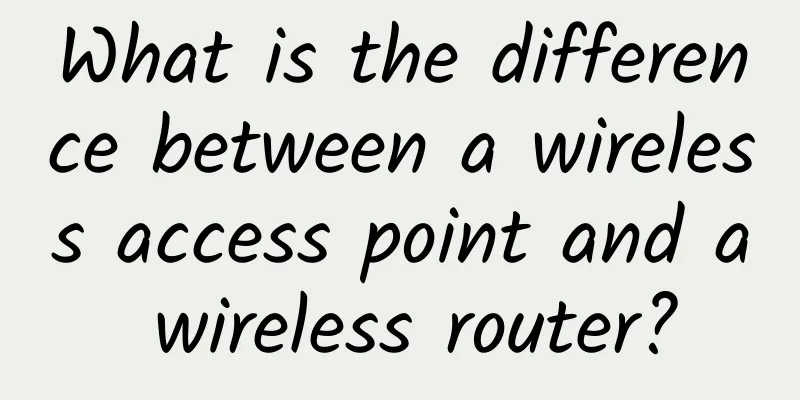What is the difference between a wireless access point and a wireless router?

|
There is a distinct difference between a wireless access point and a wireless router. A wireless access point (AP) adds Wi-Fi capabilities to a wired network by bridging traffic from a workstation onto an Ethernet LAN. A wireless router integrates broadband router capabilities (such as acting as a gateway between the Internet and a local area network) and wireless AP functionality into a single device. In simple terms, a wireless router can be a wireless AP, but a wireless AP cannot be a wireless router. What is a wireless access point? A wireless AP connects a group of wireless stations to an adjacent wired LAN. Conceptually, an AP is similar to an Ethernet hub, but instead of relaying LAN frames to other 802.3 stations, the AP relays 802.11 frames to all other 802.11 or 802.3 stations on the same subnet. What is a wireless router? A wireless router connects a group of wireless stations to an adjacent wired network. Conceptually, a wireless router is a wireless AP combined with an Ethernet router. A wireless router forwards IP packets between your wireless subnet and other subnets. Should your business use wireless access points or wireless routers? Typically, wireless routers are used in residences and small businesses where all users can be supported by one combined AP and router. Wireless APs are used in larger businesses and venues where many APs are needed to provide services, such as covering a larger area or supporting thousands of users. Wireless access control can be centralized on one router rather than distributed across several separate routers. Wireless routers also have basic firewall capabilities and use network address translation to share a single Internet address between multiple wireless stations. Most wireless routers also include a four-port Ethernet switch so that businesses can connect some wired PCs to the LAN and let them share Internet access. In other words, most wireless routers combine the functions of a wireless AP, an Ethernet router, a basic firewall, and a small Ethernet switch. |
<<: Is wireless mesh networking viable for the enterprise?
Recommend
ColoCrossing 25% off: $2.96/month - 1GB/25G SSD/20TB@1Gbps/Los Angeles & New York data centers
Last month, the blog shared information about Col...
What the frequent failures of Internet data centers can teach us
Recently, Internet failures have occurred one aft...
The upgraded broadband satellite communication system of the United States will increase the bandwidth by 45%
The first upgraded WGS satellite from the U.S. De...
SDN reshapes enterprise networks and changes the role of network managers
We have seen that many operators have significant...
Don't let hackers sneak into your network: In-depth analysis of DHCP Snooping
1. Overview of DHCP Working Principle Before lear...
DogYun Double 11: 40% off on dynamic cloud hosts, 100 yuan/month discount on dedicated servers, 10 yuan free for 110 yuan recharge
DogYun (狗云) released this year's Double 11 pr...
How should the system's facade API gateway be designed?
As the popularity of his e-commerce website grew,...
AI and IoT are still popular, but they still rely on big data analysis
Today's big data analysis market is completel...
Understanding the new features of HTTP/2 and HTTP/3 (recommended)
Compared with HTTP/1.1, HTTP/2 can be said to hav...
Easy-to-understand illustrated network knowledge - Part 2
Continuing from the previous article "Easy...
V.PS: €4.17/month KVM-1GB/20GB/1TB/Hong Kong Data Center
V.PS is a site under xTOM, providing VPS hosts ba...
Weibu Online TDP: 99.97% accuracy, how low can the false negative rate be under high-intensity confrontation?
On March 6, 2022, the "Attack and Defense Co...
The Role of WiFi in the Internet of Things
The trend toward supporting multiple connections ...
ACL (Access Control List) Principle and Application
1. ACL Introduction Communication between informa...
Liuliu Cloud: US 9929/UK/Japan native IP hosting monthly payment starting from 50 yuan
666clouds is a Chinese hosting company founded in...









